Kage-e ("shadow pictures") -- a popular form of Edo-period woodblock print -- were appreciated by children and adults and commonly used as party gags. These pictures consist of two parts: a "shadow" image and a "real" image. The shadow image, which typically bears the shape of a common, easily identifiable object, is viewed first. The real image, viewed second, reveals the surprising true identity of the shadow.
Here's a nice example by ukiyoe master Kuniyoshi (ca. 1852). It shows what appear to be the silhouettes of goldfish...
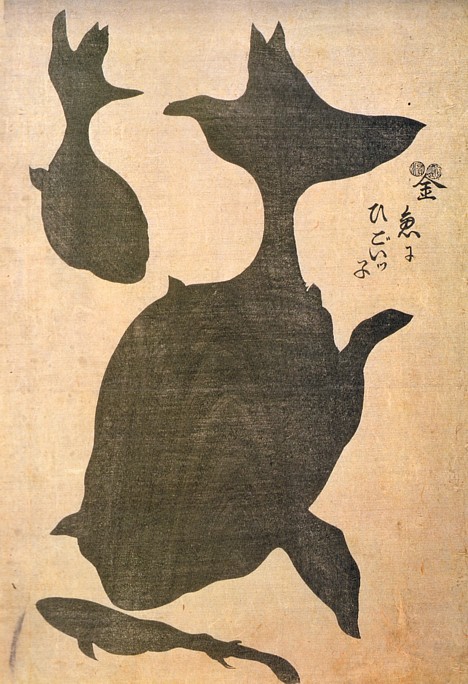
But look again...
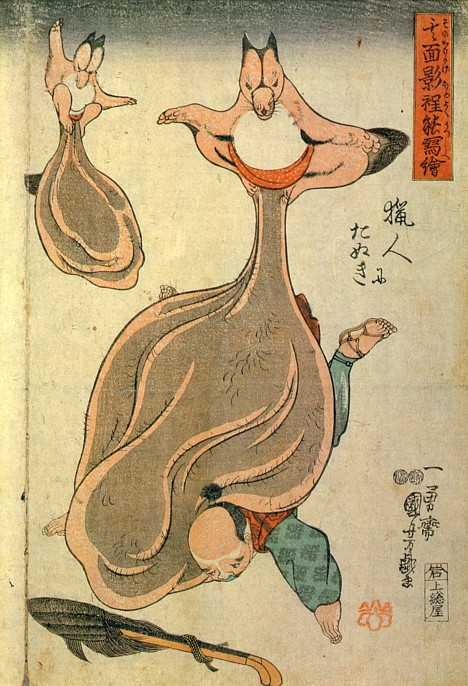
It's a flying tanuki crushing a hunter under the weight of its mammoth testicles.
Here are a few more kage-e by Hiroshige (ca. 1842). The shadows cast on shoji doors belong to men in interesting poses.
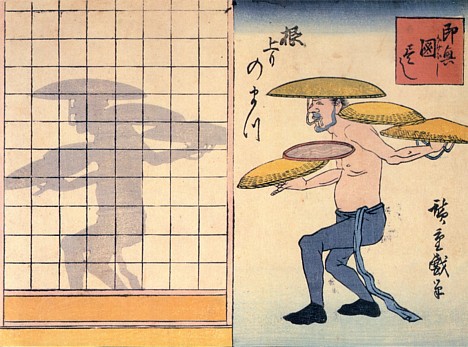
Pine tree
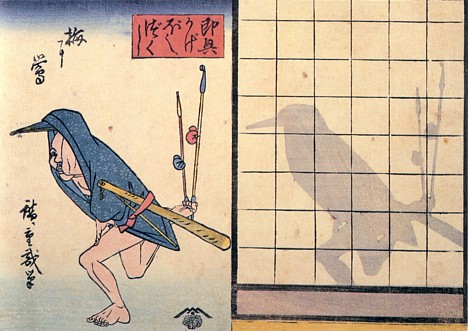
Uguisu (Japanese bush warbler) on a plum branch
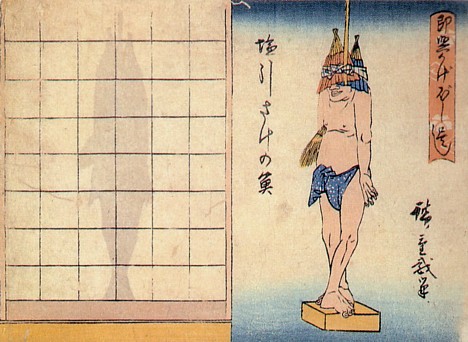
Salt-dried fish
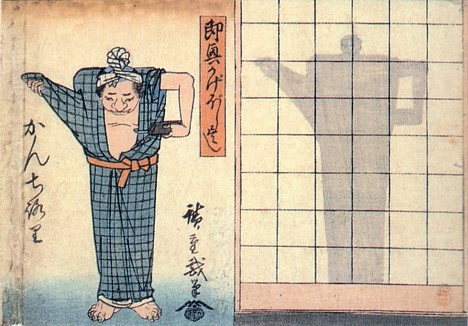
Kettle
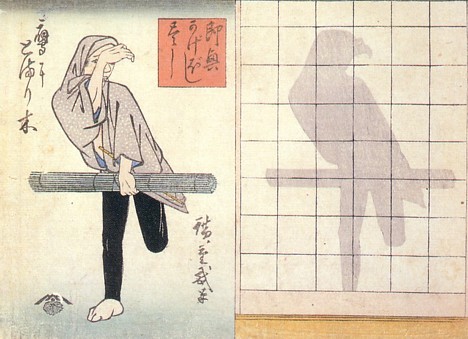
Hawk
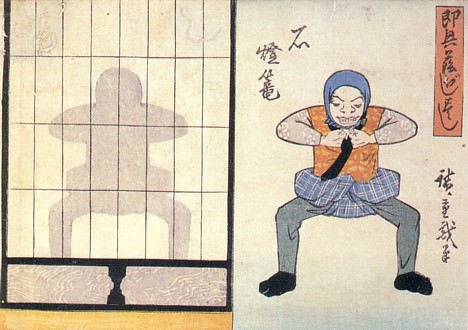
Stone lantern
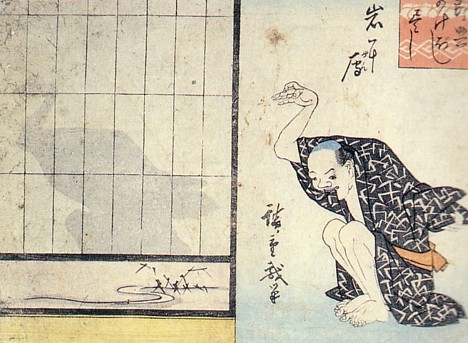
Goose on a rock
[Related: Joge-e: Two-way pictures]

somedistance
my love for hiroshige continues to grow, these are hilarious & incredible
[]giz
The racoon one reminds me of Pom Poko!
[]barbara
Is there any english literature/ research availabel about this topic? This stuff is fantastic!
[]???? - san
love it!!
[]Ziro
Amore than meets the eye... clearly didnt see that coming.. totally nuttz.
we need to filter this site since this would have been considered hardcore-porn back in Japan...
this Kuniyoshi piece really makes u think.. its like the original Rorschach test since the concept is the same with just being a ink-blotter but with a sinister twist.. or rorschach test-acle should i say.
for example... when i saw this the color tones on the tanuki made their bellies look hollow to me.. no doubt a psychological illusion. this can mean several things.. first off under the concept there is no visible penis in the picture we have to let our 'dirty minds' run wild... we think a 'hole' in the 'womb' then the whole setting becomes very phallic in a sense.
this keeps on twisting as we dont pay attention to the lesser details.. such as that alien looking tadpole in the corner that looks like its wrapping around an old Japanese instrument.. a Biwa perhaps. the timing of this art is impeccable since its around when the microscope had been refined... as this is severely perverse of course since we naturally make a connection between tadpoles shape & semen... & it would not be presumptuous to conceive a musical instrument is very much symbolic to the body of a woman, the song always being about a seductive temptress.
then the outer realm.. we see the man, whom is probably a tanuki himself, as tanuki have always been known to transform into humans under mischief.. as u can see of whats intended to show a side fin of the goldfish u can see what can be seen as a fox tail.. of course the skeptic will say its merely a extension of the hunters coat. this brings a further complex relation of tanuki, which is a somewhat obscured mix of a badger & raccoon, versus what would be seen as their arch rival, especially in Japanese folklore, the kitsune-fox. as in most folklore the kitsune-fox tend to be more malevolent, cunning, & usually with a grudge against humans as most come back to haunt their targets in female human form. on the other hand tanuki tend to be more clutzy, virtuous, & often returning a favor to their fellow human who had saved them in a past life. so here we see a very unusual yin-yang of good & evil, human vs nature, & the big question of coexistence with one another.
another bit of comedy is of course how the tanuki pose as one Large nadd.. so theres 2 in the picture, one slightly smaller than the other which is apparently a sign of permiscuous behavior. whats sad is this 'elephantitis' condition really does exist.. as have read about a man with scrotums the size of bowling balls.. but even so it seemed there was only one thing on his mind.. finding a pair of matching boobs.
the human condition is a very pathetic thing.. on the average we use about 1% of our god-given brains that make us 'superior' wondering what would happen if we unlocked the unoccupied 99%.
id title this "Tanuki Brains"
on a side note, had a revelation just the other day... as they often use the metaphor of a goldfish's turd to depict someone who 'trails along'. we get that image cuz the poo often never seems to detach itself.. so it images of how sometimes very attractive people tend to surround themselves with unattractive people, generally for an extra kick to their self-esteem.. this is an inevitable trait of mindless ego. anyways, on a larger scale, realized that Japan despite its 'divine nation' snobbery on a global scale it looks like nothing more than the goldfish feces that trails off Asia. "kingyo noh fun" in japanese.. funny how 'fun' means doodoo aye.
thanks for reading... we all know there was some time in the past where life was good.
Ziro Japan
[]